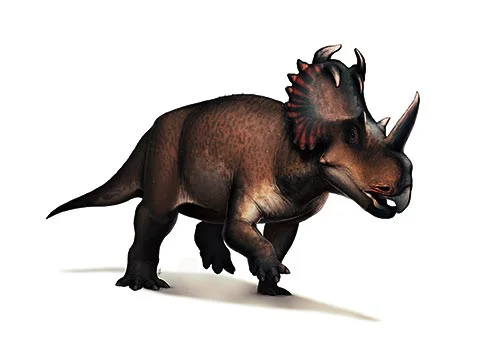Centrosaurus (pointed lizard)

Sen-tro-sore-us
Lawrence Lambe - 1904
Herbivore
Estimated 6-8 meters long
Ceratopsian
C. apertus (type), C. brinkmani
Canada, Alberta - Dinosaur Park Formation, Oldman Formation
Late Cretaceous, 77-76 million years ago
Centrosaurus Facts
Centrosaurus is a genus of ceratopsian dinosaur that lived during the Late Cretaceous period about 77-76 million years ago in what is now North America. It was a herbivore with a unique set of cranial horns and frills that distinguish it from other dinosaurs of its time.
Centrosaurus was a medium-sized dinosaur that stood about 6 to 8 meters long and weighed around 2 to 4 tons. It had a long snout and a sharp beak that it used to grasp and bite off vegetation. Its large eyes and nostrils were located on the top of its head, which suggests that it was a keen and observant herbivore.
The most distinctive features of Centrosaurus were its cranial horns and frills. It had two long, forward-curving horns above its eyes and a small horn on its nose. Its large frill was shaped like a half-moon and extended from the back of its skull. The frill was covered with bony knobs and spikes, which may have been used for self-defense or for attracting mates.
Centrosaurus lived in herds and roamed the plains and forests of North America. It was a common dinosaur and its remains have been found in the Dinosaur Park Formation in Alberta, Canada, and the Lance Formation in Wyoming, USA.
Centrosaurus is an important dinosaur for paleontologists as it provides insights into the evolution of ceratopsians and their adaptations to their environment. Its unique set of horns and frills make it one of the most recognizable dinosaurs of the Late Cretaceous period.



